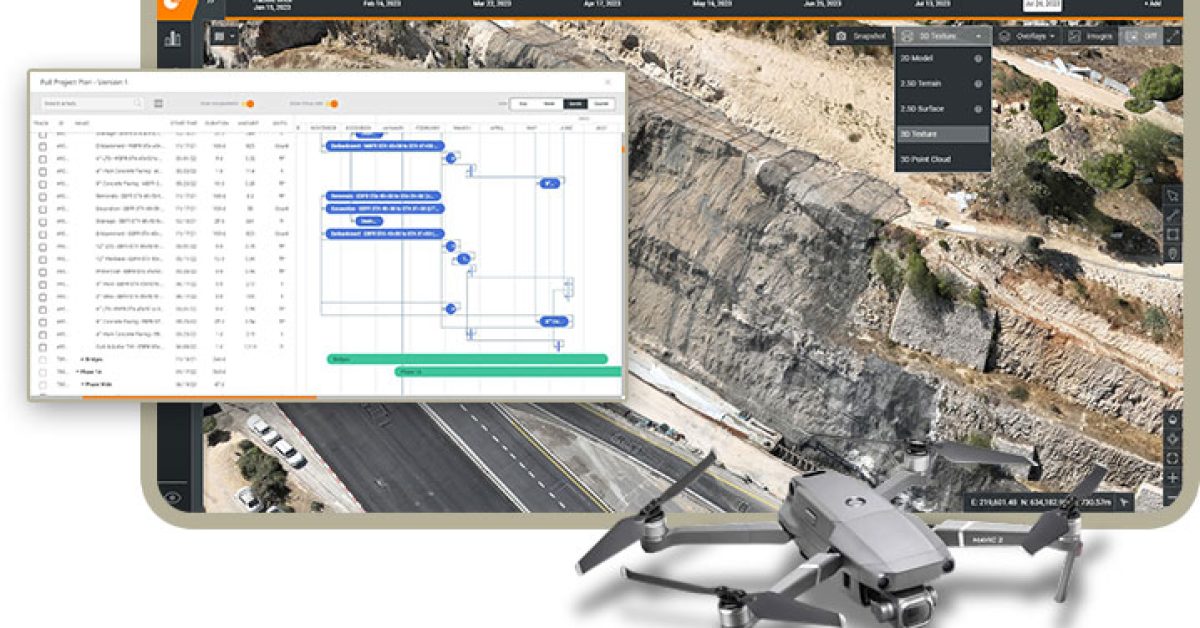Introduction
The construction industry stands on the brink of a technological revolution, with artificial intelligence (AI) and advanced technology paving the way for unprecedented efficiencies and capabilities. In a recent dialogue featuring industry experts Todd Sutton, Tom Jennings, and Dr. Florent Poux, the depth of AI’s integration and its future in heavy civil constructionCivil construction is a branch of engineering that involves the design, construction, and maintenance of the built envir… More was meticulously explored. This blog post delves into their insights, shedding light on the current state and the exciting prospects of construction technology and AI.
The Advent of AI in Construction
AI is not a newcomer in the construction arena. It has been enhancing various aspects, from project management to safety protocols. Todd Sutton emphasizes, “this AI is not new within the construction industry…It’s been applied on multiple different systems.” This introduction sets the stage for understanding AI’s evolving role in construction, highlighting its application in predictive analytics and machine control systems.
Transformative Technologies and Methodologies
The discussion unveiled several groundbreaking technologies reshaping the industry. Autonomous machine control guidance systems, AI-assisted ground control marking tools, and the integration of AI in modeling are just the tip of the iceberg. As Tom Jennings puts it, these tools are “a huge time saver,” showcasing AI’s capacity to streamline operations and enhance productivity.
The Power of Data: Point Clouds and Beyond
Dr. Florent Poux offered an in-depth look at how AI bridges the 3D world with the construction industry, emphasizing the significance of point cloud data. He explains the transition from traditional mathematical algorithms to machine learning and deep learning approaches, highlighting the importance of “injecting some kind of knowledge” into the data to create valuable outputs for construction processes.
Facing the Challenges: Data Integration and Quality
One of the prominent challenges discussed is data integration and quality. Todd Sutton pointed out the misconception that AI implementation is hindered by data disparity. However, with today’s technology, such as Retrieval-Augmented Generation (RAG) allows for ingestion of data from various data repositories including an Enterprise Knowledgebase into vector databases, these hurdles can be overcome. “You can apply vector databases…that will piece those information together for you,” Sutton explains, offering a solution to one of the industry’s most pressing issues.
The Roadmap to AI Implementation
The conversation also touched upon practical steps towards adopting AI in construction companies. The consensus underscores the importance of education and starting small. Dr. Poux advises, “Start with classical approaches and use deep learning only if these approaches fail,” highlighting a cautious yet progressive approach to integrating AI technologies.
Embracing Failure as a Stepping Stone
A key takeaway from the discussion is the acceptance and encouragement of failure as part of the innovation process. As Todd Sutton eloquently puts it, “You will fail at first…but then eventually, you’ll have a solid understanding and implementation.” This sentiment is echoed by Tom Jennings and Dr. Poux, who stress the importance of security and rigorous testing in the development of AI applications.
Conclusion
The future of heavy civil constructionCivil construction is a branch of engineering that involves the design, construction, and maintenance of the built envir… More is undeniably intertwined with AI and technology. As industry experts have shown, embracing these advancements offers a path to enhanced efficiency, safety, and innovation. However, the journey is not without its challenges, requiring a blend of education, strategic implementation, and a willingness to learn from failures. As we venture further into this technological frontier, the insights from Sutton, Jennings, and Poux serve as a valuable guide for industry professionals and enthusiasts alike.
If you’d like to check out a webinar recording, click here.



